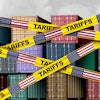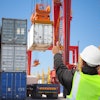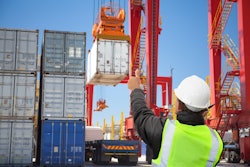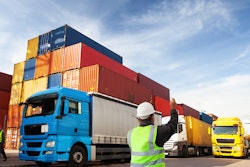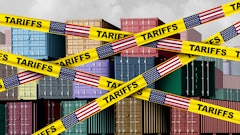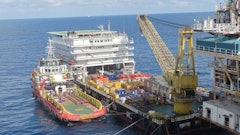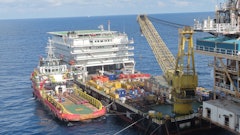
Heightened scrutiny at U.S. ports is reshaping how importers move goods across borders. Customs and Border Protection (CBP) has increased both the volume and intensity of inspections, creating new operational challenges for small and mid-sized businesses that depend on predictable logistics cycles.
CBP’s enforcement focus—once largely administrative—is now targeted, data-driven and far more consequential. Delays at ports have become a growing threat to supply chain reliability, as importers face more frequent holds, audits and exposure to investigations. For small and mid-sized importers, these developments underscore that documentation and diligence are now central to transportation planning.
The new reality of enforcement at U.S. ports
CBP has dramatically expanded its enforcement footprint over the past two years. The agency has hired thousands of new officers and trade specialists, as part of broader federal funding initiatives to strengthen border oversight and trade enforcement. At the same time, it has deployed new data-driven targeting systems to flag high-risk shipments for inspection well before vessels arrive at port. The focus is squarely on trade fraud, tariff evasion, country-of-origin misclassification and other violations that distort the integrity of U.S. supply chains.
This shift has translated into record activity from CBP. In 2024, the government agency completed 417 trade audits. That figure is on track to double in 2025 year-to-date, potentially ballooning to more than 1,000 audits initiated. At the end of August, the duties recovered from audits at the border had already surpassed the prior year’s total, $192 million compared with $118 million in 2024. Penalties that were once a minor administrative slap on the wrist can now result in full shipment seizures or mandatory re-exportation, particularly for repeat offenders or those importing from high-risk regions.
The downstream impact of this enforcement wave is significant. CBP’s own statistics show that “exams with intensive inspection requirements,” which include full container unpacking and repacking, can extend an importer’s clearance time from 1-3 days to two weeks or longer, depending on the commodity and documentation accuracy. If another federal agency becomes involved—such as the Food and Drug Administration (FDA), the Consumer Product Safety Commission (CPSC) or the Environmental Protection Agency (EPA)—clearance times can extend past 30 days. A hold that could once be resolved by correcting a document can now trigger formal review cycles and re-inspection. These delays disrupt inventory planning, increase demurrage and storage fees and, in some cases, halt production lines waiting on detained components.
The operational costs are equally burdensome. Importers must now budget for additional brokerage labor, longer drayage windows and potential re-inspection charges from carriers or bonded facilities. For time-sensitive sectors such as automotive and electronics, a two-week delay at port can unravel just-in-time (JIT) manufacturing schedules, forcing costly airfreight substitutions or temporary plant shutdowns.
The crackdown is not limited to detection by the CBP, either. Through the agency’s e-Allegations Program, anyone—including competitors or former employees—can report suspected trade violations such as misclassification, undervaluation or forced labor. Verified claims can lead to inspections, audits or penalties under the False Claims Act, and whistleblowers may receive between 15-30% of recoveries.
Together, these trends make ports the central chokepoint of modern trade enforcement. Heightened scrutiny, extended clearance cycles and frequent investigations have transformed customs compliance from an administrative task into a strategic supply chain priority.
5 steps to keep cargo flowing
For small and mid-sized importers, tighter enforcement translates directly to lost time and capital. Finance teams increasingly view trade documentation as a front-office priority, and importers are hiring dedicated trade compliance professionals or contracting external experts simply to keep shipments moving on schedule.
Adding to the risk, CBP publicly identifies certain companies when it issues Withhold Release Orders (WROs) or launches investigations under the Enforce and Protect Act (EAPA). While these disclosures provide transparency, they can also cause reputational risk before investigations conclude.
To keep shipments moving without costly delays or penalties, follow these golden rules for streamlined compliance with port regulations:
1. Tighten up documentation
Verify that certificates of origin, tariff classifications and supplier attestations are consistent before entry filing. Even small discrepancies can trigger inspections, and getting “preclearance”—having all documentation verified before shipping—significantly improves clearance times and reduces the likelihood of costly audits.
2. Conduct targeted pre-entry audits
High-risk product categories, particularly those connected to semiconductor materials, chemicals or other national security–sensitive sectors, should undergo additional review internally. For instance, hydrogen chloride shipments from China regularly prompt CBP inquiries about end use and re-export intent. Pre-entry audits help identify and resolve potential issues early.
3. Build relationships at the port level
Working with experienced customs brokers and local port authorities allows importers to anticipate issues and respond quickly when questions arise. Having documentation readily available reduces the chance of escalation, which importers should take every available step to avoid: Once cargo falls out of the normal processing “flow” and into a holding area, it’s difficult to get back on track.
4. Take advantage of CBP and industry resources
CBP offers regular webinars and importer self-assessment programs that explain current enforcement trends. The rules have changed, and it is the responsibility of importers, large and small, to follow them. Participating in webinars or using checklists from trade associations can help smaller importers understand the CBP’s priorities and better insulate themselves against an audit.
5. Use voluntary self-disclosure wisely
If an error is found, such as an incorrect vendor listing or classification, consider filing a voluntary disclosure. This helps to reduce penalties and prevent escalation in the event of an audit. Although disclosure involves administrative costs, it demonstrates good faith in compliance and can help keep importers off enforcement blacklists.
Compliance as a competitive advantage
In addition to preventing costly audits and penalties, pristine compliance can also be a differentiator in the market. When businesses maintain clean documentation and transparent supplier networks, they are less likely to experience shipment holds or last-minute airfreight expenses, but they also support pricing stability.
Importers who avoid penalties and storage fees can hold their prices steady, while competitors may need to increase costs to recover losses from poor compliance with port regulations. Over time, customers and logistics partners may come to view compliant importers as “low-risk, high-reliability shippers,” rewarding them with preferred treatment and consistent delivery windows. Mature compliance rarely delivers an immediate return on investment, but it does distinguish the most resilient operators in the market, especially in an environment where enforcement is strengthening.
Port enforcement has become as much of an operational issue as a legal one in 2025. For small and mid-sized importers, effective documentation, pre-entry preparation and trusted port relationships are now essential parts of logistics management. CBP’s enforcement crackdown shows no signs of easing up, and importers with disciplined documentation practices and up-to-date knowledge of regulations can avoid major penalties and gain a reputation for reliability that strengthens their position in the market.

